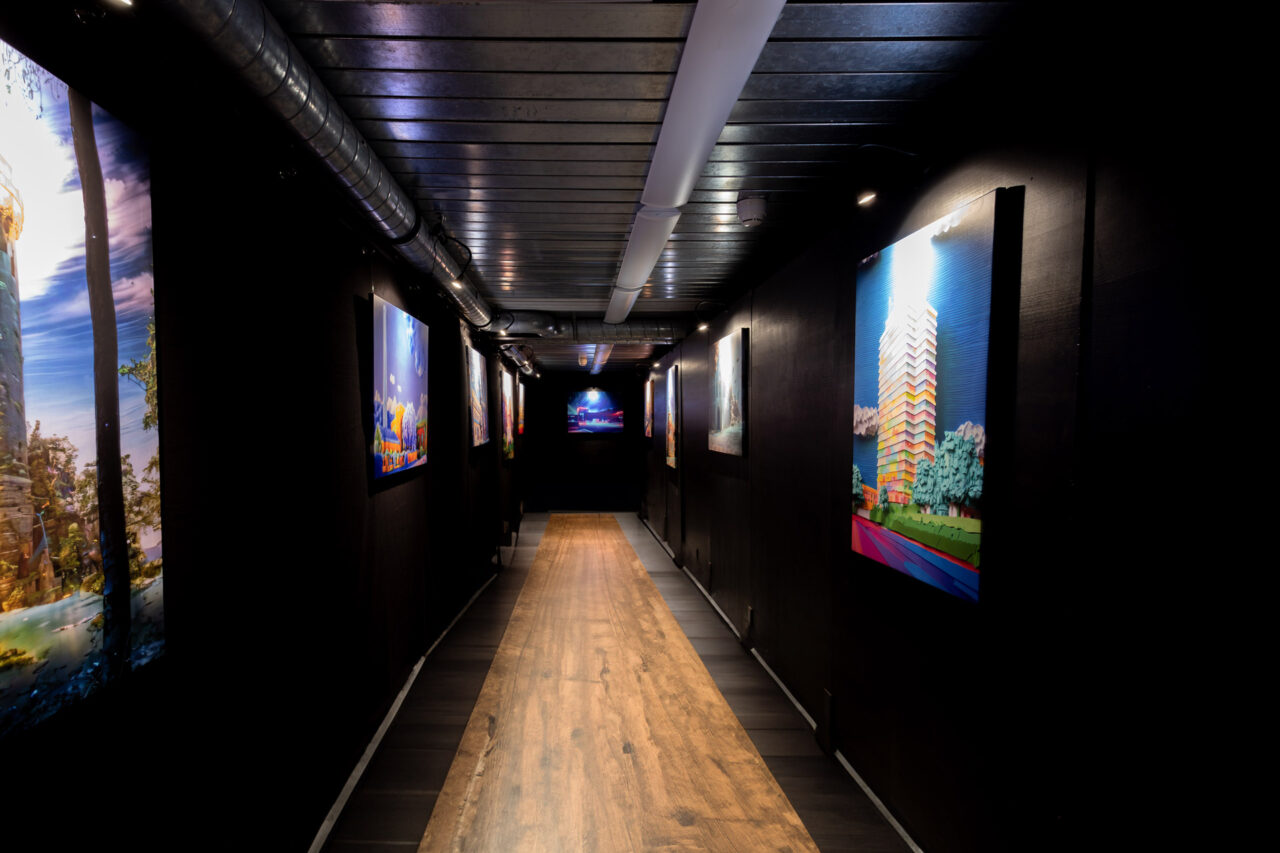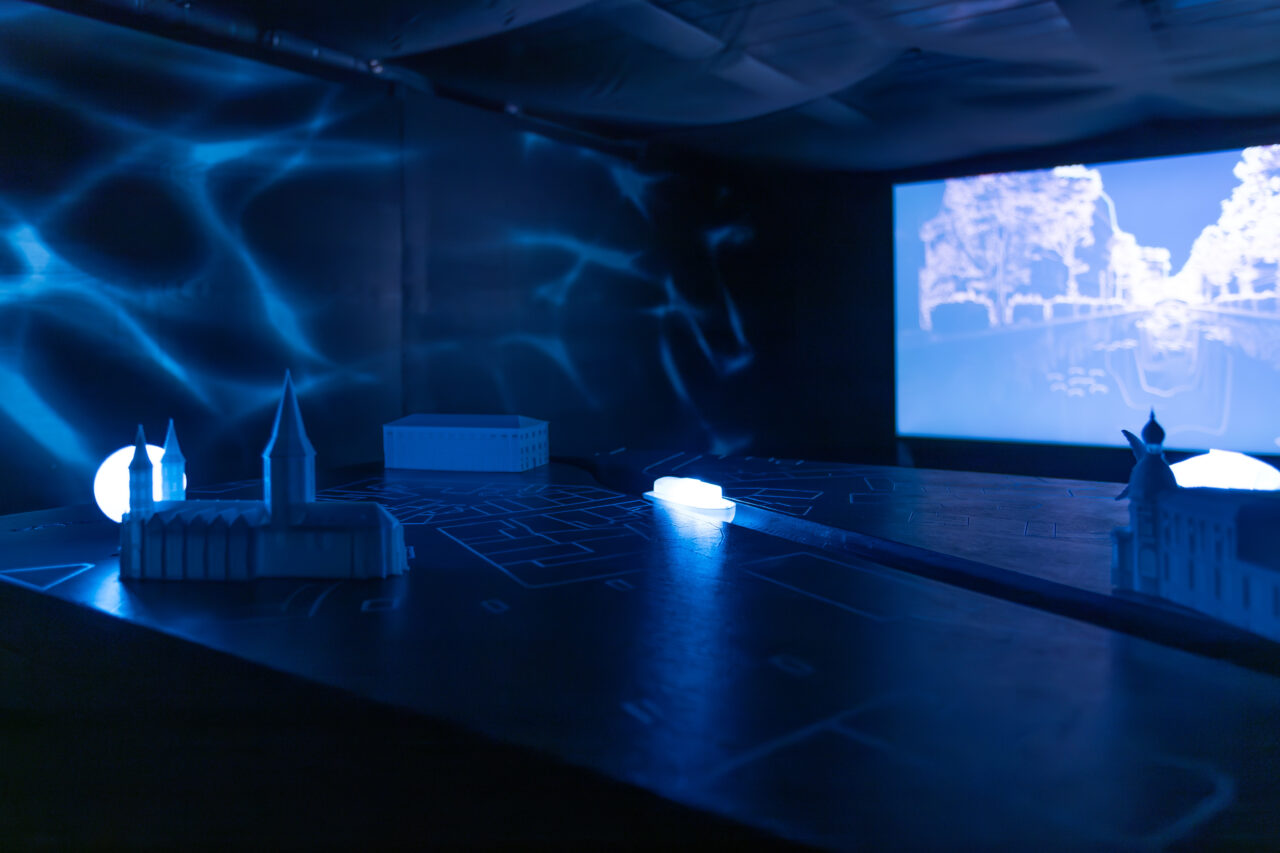Architecture, technology, man and nature confront each other in the cityscape and compete for the upper hand. What could the symbiosis of anthropogenic and natural habitat look like?
On a medially staged expedition, these contrasts are made tangible in an unprecedented way. The river course hidden beneath the city is integrated into the cityscape and is the starting point for the fusion of man-made architecture and the natural environment.
The “Linie L” runs through Kaiserslautern, past prominent places and buildings.

The exhibition shows these landmarks reinterpreted by means of A.I. in the first part.
In the second part, visitors steer a boat across the Lauter River and experience the transformation from vision to (virtual) reality.
A stele with a simple city map serves as an interface, while 3D-printed landmarks provide better orientation. The position, orientation and time of day can be controlled by visitors using additional control elements (fish, boat and sun).


Arduino microcontrollers register the inputs via various sensors, regulate the LED lighting of the interface and forward the signals to the application on the large screen.
Realized with the Unreal Engine, the fusion of nature and architecture is visualized and made explorable.
My tasks were the implementation in the Unreal Engine and Arduino, as well as the design of the environment
Team: Hanna Baas, Lena Edel, Sophia Erhardt, Jacqueline Kurzbach, Christin Sarreira Santos, Clara Sprunck, Josephine White
Supported by: Thomas Beisiegel, Prof. Werner Glas, Jasmin Manthey
